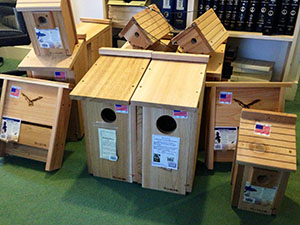
Just like humans, wildlife species have four primary needs to survive: food, water, shelter and space. These four components form the basis of wildlife habitat, and each species fulfills these needs differently. Yet, for all species, if one of these four components is missing in a given area, it can affect the species’ population. In this article, I’ll be focusing on one of these needs – cover (the wildlife term for “shelter”) — and what are potential solutions when it’s a limiting factor in an environment. Specifically, how we can use man-made cover to help out wildlife.
Cover comes in all shapes and sizes. Burrows, ground nests, tree cavities, grassland alleyways, shrubby thickets, underwater root mats, and much more. There is a huge range of cover types, and many species are very specific about what they will use for shelter. A Black bear’s cover needs are going to be vastly different than that of the Carolina chickadee. However, all cover shares the same basic function — it provides secure protection from predators and the elements. Day-to-day life for nearly all wildlife is a constant struggle as they seek food, lure mates, raise young, and avoid predation. So, most species are very keen on finding a safe home.
When in doubt, nature provides the best cover. Wildlife has evolved to take advantage of the conditions created by natural processes. In fact, one of the best things that landowners can do to improve cover for wildlife is to simply let nature take its course. This is perhaps best exemplified by a dead standing tree or log. A dead tree can provide a home to countless species, including Pileated woodpeckers, Great horned owls, Red-backed salamanders, Wild turkey, Grey fox, Red fox, Black bear, Southern fly squirrel, or Grey tree frog — just to name a few.
Unfortunately, the inclination of most landowners is to remove dead standing trees (called snags) or downed trees. If a tree poses a safety hazard, this certainly makes sense. Yet, to modify an adage: if a tree falls in the forest (or is standing dead), and no one is around to see – who really cares? Leave it be!
With the caveat that nature usually knows best, there are some species (such as barn owls, American Kestrels, and bats) that can, and do, benefit from man-made cover — specifically man- made nest structures. For many of these species, humans have modified the landscape so much that suitable nest sites (like snags) are not as readily available. This is particularly common in our grasslands — due to the growth of larger and “cleaner” farms and suburbanization.
I’ve included an abbreviated list (below) of wildlife species in the Piedmont that are in decline and could use some help. For all of these species, a quick internet search will provide you with countless ready-made shelters or design plans, if you’d rather build your own.
Before jumping into a new project, however, remember that simply providing cover won’t necessarily help wildlife populations if there is also a shortage of food, water, or space. Again, all four components are needed for wildlife to thrive.
Barn Owls
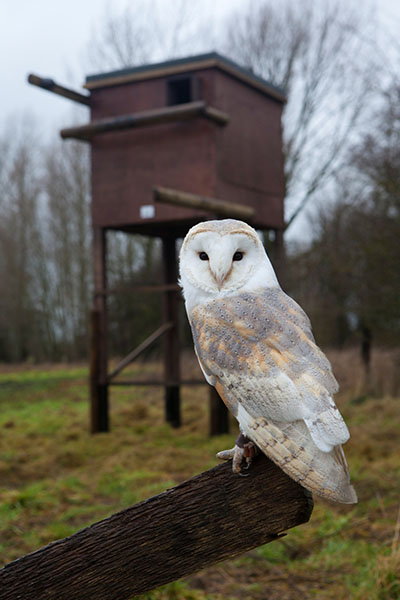
Barn owls are perhaps the most majestic owls of North America. These nocturnal birds primarily hunt rodents over large grassland expanses (typically 200 acres). Their numbers have declined precipitously over the past 50 years, by approximately 2.5% a year. This decline is thought to be due to loss of farmland and nesting sites.
Barn owls readily use man-made nests. These can be stand-alone nest structures on a pole or in an existing building like silo. For building nests, a fully enclosed box is probably not necessary since the roof provides cover. Yet, a lip is recommended to prevent nestlings from falling off.
American Kestrel
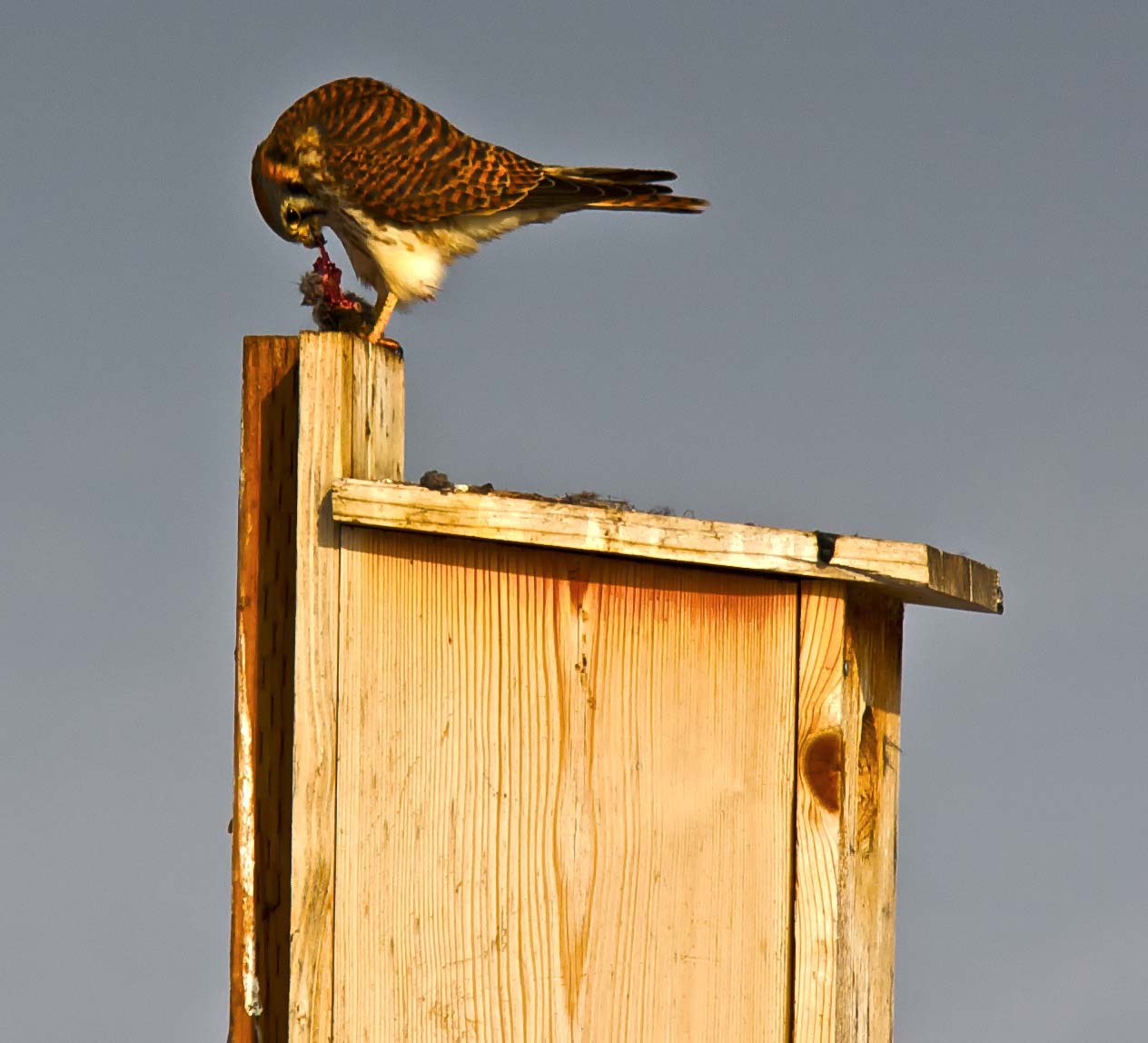
Kestrels are the smallest and most colorful of the Piedmont falcons, and they inhabit meadows, farm fields, sparse woodlands, and even developed areas. You can often see these birds of prey on power lines — overlooking fields in search of prey. Like Barn owls, they are declining, probably as fields and meadows are “cleaned-up”.
Kestrels also readily use man-made bird houses. Most designs that work for the Kestrel also often works for the Eastern Screech owl — another interesting species.
Bats
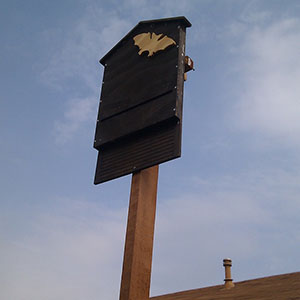
Bats are perhaps not as charismatic as hawks or owls, but they are no less important. For example, bats are critical to control insects like mosquitoes. Virginia’s Piedmont has no less than nine bat species. Unfortunately, many of our native bat populations are currently being decimated due to a fungus called white-nose syndrome. This fungus is widespread now and results in mortality of 90% or greater infested populations.
Many people think that bats only nest caves. In reality, only some species use caves, and often only during the winter. Bats prefer crevices that mimic the space between tree and bark, so narrow designs are good. Regarding placement, a bat house needs good sun exposure and many recommend placing the structure on a house as opposed to a tree to minimize predators.
Blue Orchard
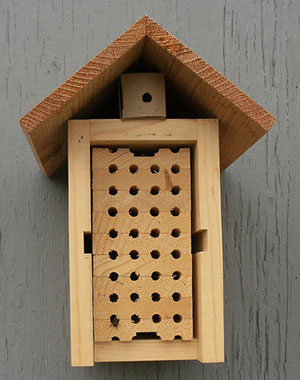
Bees Just like bats, our pollinators are also in decline. The suspected culprit is exposure to insecticide. One of our native bees that is highly beneficial to humans and our ecosystem is the Blue orchard (Osmia lignaira), also known as orchard mason bees. These insects help pollinate our apples, cherries, and other fruit trees.
Orchard bee females prefer to lay their eggs in tubes — approximately ¼” in diameter and typically 6” deep. They will readily use blocks of wood with drilled holes or bundles of hollow stems like raspberry.
These are just a few species that benefit from man-made structures. Others include purple martins, eastern bluebirds, wood ducks, and more. Aside from helping dwindling species, man- made nests and houses also provide hours of entertainment — your own, real-time wildlife documentary!
James Barnes is the Sustainable Habitat Program Manager for The Piedmont Environmental Council. To learn more about sustainable land management, habitat restoration, and native plant landscaping; visit PEC’s website: www.pecva.org/habitat
Flickr Photos
1. Barn Owl with a fancy nesting box in the background, Credit: The Co-operative
2. American Kestrel atop its house, Credit: Low Jumping Frog
3. Bat house, Credit: Colm Mcsky
4. Blue Orchard Bee nest structure, Credit: Born1945
